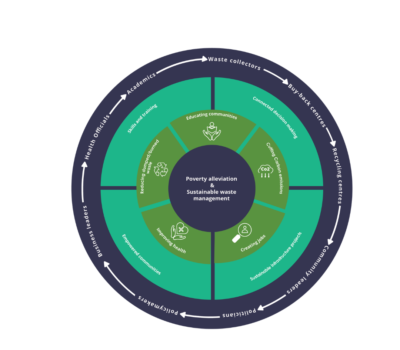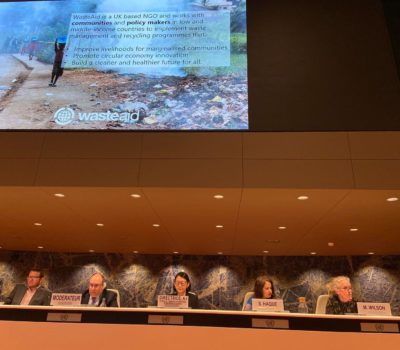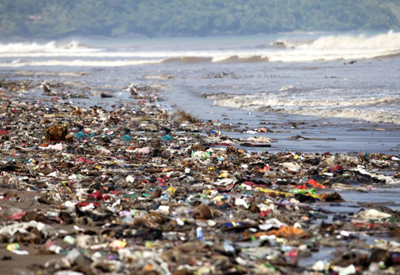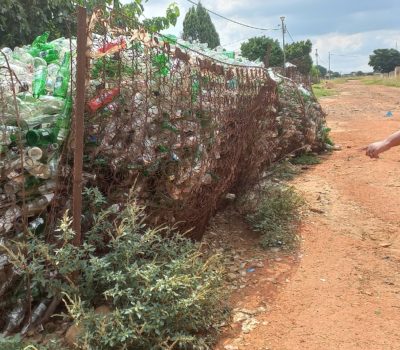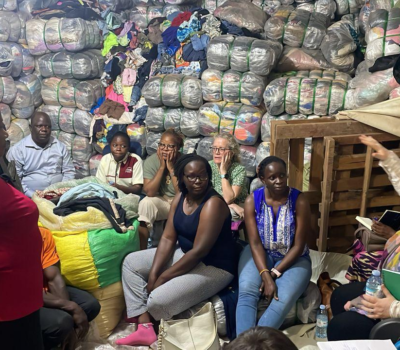Technology: How Used Solar Panels Are Powering the Developing World
Thought Pieces
Author: Guest Author
Published: 17 September 2021
An overlooked niche in the energy trade is keeping high-tech waste out of the trash — and helping to connect millions of people to reliable electricity. Bloomberg columnist on emerging markets, technology and waste, Adam Minter, explores. This article first appeared in Bloomberg Opinion and is shared with permission from the author.
A few years ago, I visited a dusty warehouse selling secondhand clothes in Cotonou, Benin. In the back, behind bundles of used Canadian T-shirts, were two pallets of unboxed solar panels. I assumed they were destined for the roof. One of the employees told me otherwise. “Our boss sells them to his customers across the border,” she said, referring to Nigeria. “They use them for water pumps on the farms.” A few minutes later, the boss showed up and told me that he expected secondhand solar would soon be a bigger business than the centuries-old, multibillion-dollar used-clothing trade.
Across the developing world, homeowners, farmers, and businesses are turning to cheap, secondhand solar to fill power gaps left by governments and utilities. To meet that demand, businesses ranging from individual sellers on Facebook Marketplace to specialised brokerages are getting into the trade. Earlier this month, Marubeni Corp., one of Japan’s largest trading houses, announced that it’s establishing a blockchain-based market for such panels. Collectively, these businesses will likely play a crucial role in bringing renewable energy to the world’s emerging markets — and keeping high-tech waste out of the trash.
In 2016, the International Renewable Energy Agency estimated that as much as 78 million tons of solar-panel waste will be generated by 2050. That’s almost certainly an undercount. Over the past decade, falling prices and improved efficiency in newer models have offered a strong incentive to replace solar panels earlier than their intended lifespan. By one estimate, those upgrades could lead to 50 times more waste than the agency has predicted within five years.
In developed countries, recycling — not reuse and resale — tends to be the knee-jerk response to managing such waste. But there are two problems with recycling unwanted solar panels. First, doing so is far costlier than simply landfilling them. Second, waste panels often aren’t waste; they’re just degraded by time in the sun or less efficient than newer models. They may not be good enough for San Francisco homeowners and cutting-edge utilities, but they work perfectly well for anyone in a sunny climate in need of stable, off-grid power who doesn’t want to pay full price.
That’s potentially a huge market. Between 2010 and 2019, the number of people living without electricity declined from 1.2 billion to 759 million worldwide. Some of that gap was closed by new power lines and other transmission facilities. But most of it was achieved by installing small solar systems designed to power a village, farm or even a single home. As of last year, 420 million people got their electricity from off-grid solar systems. By 2030, according to the World Bank, that number could nearly double.
Nobody knows how much of this market has been met by secondhand panels and systems. But the volumes already being sold are tantalizingly large. Laid Sahraoui, founder and managing director of Hong Kong-based R3 Tech, a major broker, “pessimistically” guessed that there are 10 million used solar panels on the global market. Melissa Schmid, of EnergyBin, a Minnesota-based exchange for buyers and sellers of used and overstocked solar equipment, told me that the company markets 1.5 million pieces of photovoltaic equipment on its site. “At points, we have five million.”
The deals pulled from this inventory can be massive. Schmid mentioned a recent shipment of 25 megawatts-worth of panels (weighing as much as 2,000 tons) to Afghanistan from the U.S. For Sahraoui, such deals are common. Last year, he traveled to Texas to buy “hundreds of thousands” of hail-damaged solar panels. Customers for those panels range from Pakistani farmers seeking to pump water for irrigation to Lebanese hoteliers seeking an alternative to the unreliable local grid.
About the author
Adam Minter is a columnist with Bloomberg Opinion, where he writes about emerging markets, technology, waste, and other topics. From 2002 to 2014, he was based in Shanghai, where he covered the trans-Pacific trade in recycling. His first book, “Junkyard Planet: Travels in the Billion Dollar Trash Trade,” is an insider’s look at the world of globalised recycling. His most recent book, “Secondhand: Travels in the New Global Garage Sale” is a deep dive into the secondhand economy that thrives around the world.

